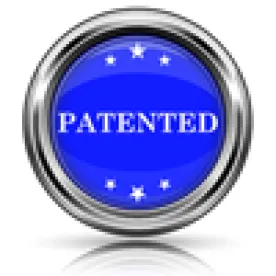Takeaway: A request for rehearing is not an opportunity to reiterate arguments previously addressed in the Board’s Decision on Institution, and merely express disagreement.
In its Decision, the Board denied Patent Owner’s Request for Rehearing of the Decision to institute covered business method patent review of claims 1-21, 24-27, 29, 30, 32, 33, and 36-39 of the ’409 patent, and denied Patent Owner’s request for an expanded panel.
The party requesting rehearing “must identify, specifically, all matters the party believes the Board misapprehended or overlooked, and the place where each matter was addressed previously. 37 C.F.R. § 42.71(d).” Decisions on Institution are “reviewed for an abuse of discretion. 37 C.F.R. § 42.71(c).”
Patent Owner argued that the Board misapprehended or overlooked: “(a) the text of the AIA in finding that claim 12 provides standing for CBM patent review (Req. Reh’g 4, 6–9); and (b) Petitioner’s failure to meet their evidentiary burden of demonstrating that the claims of the ’409 Patent do not recite a technological invention (id. at 4, 9–12).”
The Board first addressed Patent Owner’s challenge relating to standing based on claim 12. First, the Board noted that it had already considered and found unpersuasive the same arguments when they were raised in the Preliminary Response. The Board explained that “[a] request for rehearing is not an opportunity to reiterate arguments that were addressed in our Decision, and merely express disagreement.” With regard to the argument that the “payment for access to data” limitation of claim 12 “does not render the ’409 Patent a CBM,” the Board noted that the argument was not previously raised. Therefore, the Board could not have overlooked or misapprehended that argument.
The Board next addressed the arguments concerning whether the ’409 Patent recited a technological invention. The Board noted that Patent Owner’s arguments are substantially the same as those raised in the Preliminary Response. In this regard, the Board was persuaded by Petitioner’s arguments that the “access mechanism” limitation is not “a technological feature or improvement over the prior art.” The Board was also not persuaded by Patent Owner’s argument that the Board did not consider the “subject matter claimed as a whole,” indicating again that Patent Owner’s argument had already been presented in the Preliminary Response, and was found unpersuasive. With respect to the assertions that “(1) Petitioner failed to meet their evidentiary burden because Petitioner did not address the prior panel decisions” and “(2) the Board overlooked its obligation to evaluate the technical invention in view of then existing technology in the context of digital rights management,” Patent Owner did not identify specifically where the arguments were previously raised.
Patent Owner also argued that the Board overlooked “meaningful limitations in the claims” that were ignored in the Petition. However, the Board noted that it had already considered this argument and found it to be unpersuasive.
Finally, regarding the request for an expanded panel, Patent Owner cited Standard Operating Procedure 1, which states that a “patent owner in an appeal … may suggest the need for an expanded panel.” Patent Owner requested an expanded panel “to craft a cohesive interpretation of the phrase ‘financial product or service.’” However, the Board cited Conopco, Inc. v. Procter & Gamble Co., Case IPR2014-00506 (PTAB Dec. 10, 2014) (Paper 25, informative), which states that “[t]he members of the Board deciding an institution matter are not authorized to select themselves, or, of their own accord, select other Board members to decide the matter, upon request of a party or otherwise.” Therefore, the request for an expanded panel was denied.
J.P. Morgan Chase & Co. v. Intellectual Ventures II LLC, CBM2014-00157
Paper 20: Decision on Request for Rehearing
Dated: May 11, 2015
Patent: 6,314,409 B2
Before: Kristen L. Droesch, Barbara A. Parvis, and Matthew R. Clements
Written by: Droesch



 />i
/>i
